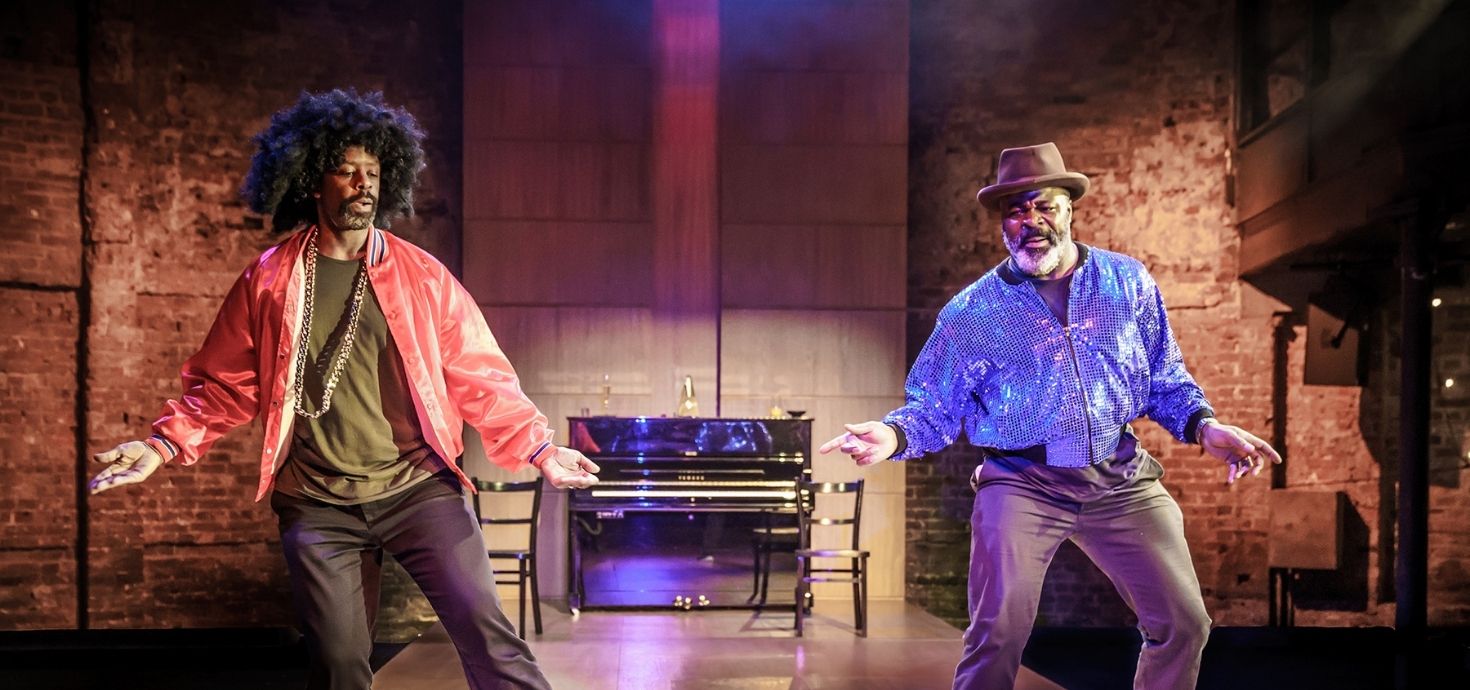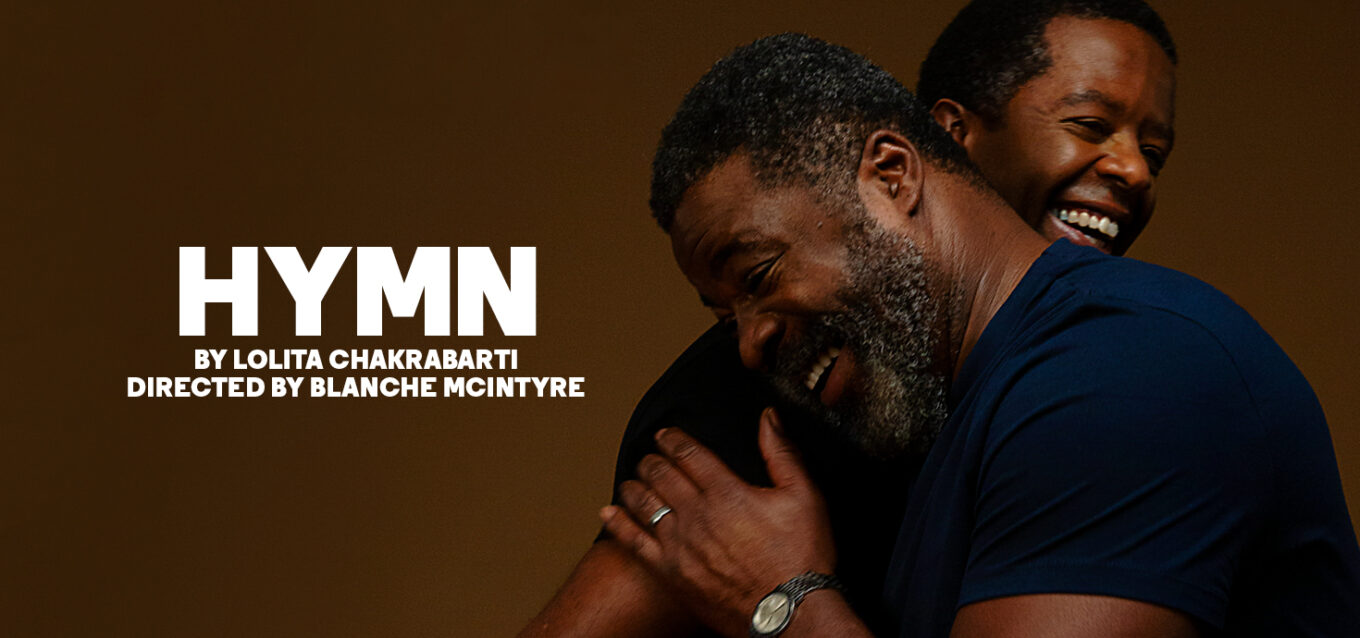ALEX DARBY reviews Lolita Chakrabarti’s Hymn (2021) at the Almeida.
Lolita Chakrabarti’s Hymn is a story of platonic love between two black men. This very premise – an emotional male bond under a female gaze – feels new and necessary, and is intricately wrought. Adrian Lester (Gil) and Danny Sapani (Benny) play two half-brothers brought together in middle-age at their father’s funeral and are excellent throughout. While elements of the plot feel disconnected, the nuances of their relationship, and at times their sheer joy, sustains the drama.
Gil is depicted initially as smooth and confident, while Benny appears somewhat lost, turning to alcohol. As they connect to one another, they open up, and it is through this that Chakrabarti unravels their initial presentations. The more affluent Gil appears at first well put together, described as having ‘security in his bones’, but this is revealed to be a facade. Although more raw, Benny’s character runs deeper and holds faster than appearances suggest; he keeps his word and fosters strong relationships with friends and family.
Chakrabarti artfully employs the full toolkit that the stage offers. The title, Hymn, suggests the importance of music, and the play draws our attention to the affective power of song. There are few directly religious connotations, however, with the drama instead offering an ode to the transcendental beauty of friendship. Benny’s singing voice is rich with soul, and the brothers are brought closer together through music. The play reaches a joyous fervor as they dress up and dance to 80’s hip hop and disco classics, with Gil’s attempt to relive his break-dancing days drawing a particularly strong applause. This scene marks a high point in the play, its silliness never verging on crude but revelling in genuine elation.

If music fleshes out character, clothing seems to reveal the ways in which selfhood can be falsely constructed. Gil is inscrutable behind his quality suits; it is only through playing dress-up and dancing that the audience glimpses a little more of who he can be. As the play reaches its lowest ebb, Gil’s clothes and finery are racked up, their weight physically hanging over his head.
The socio-political context of being a black British man is subtly weaved into Gil and Benny’s relationship, the play touching on issues such as suicide and racism. They appear as facts of life, not impositions or opportunities for a playwright to proselytise, and indeed are all the more powerful for it.
The play’s one flaw is the way the plot unravels. The tragic climax was surprising in the sense that it did not feel as though it had been entirely written into the characters or the events leading up. It could be said that the very fact that the plot feels disconnected to the characters portrayed contributes to the idea that we are unable to truly know another’s constructed character. Indeed, silences and lack of communication are a significant part of the performance. The phrase ‘music is sound and silence in time’ is repeated; the same could be said of theatre, and the play’s silences are rich. However, if this was the intended effect, it still fell short in that the actual experience of the denouement was uncomfortable.
Despite a slightly incongruous plot, the play’s exposition of brotherly love and friendship is gorgeously nuanced and a pleasure to watch.
Featured Image Source: Almeida Theatre





